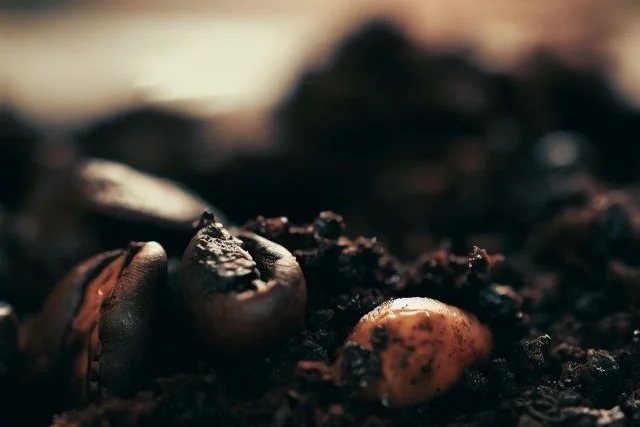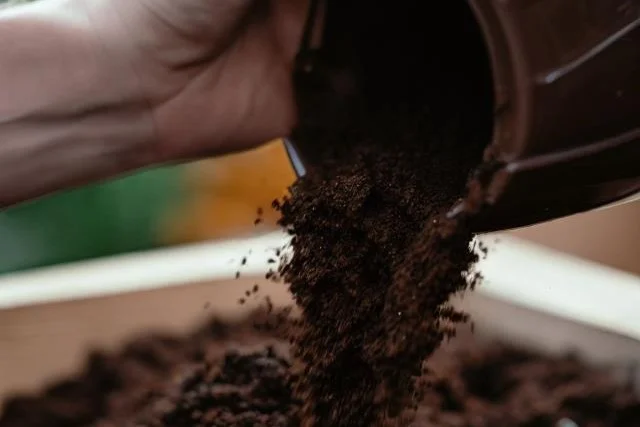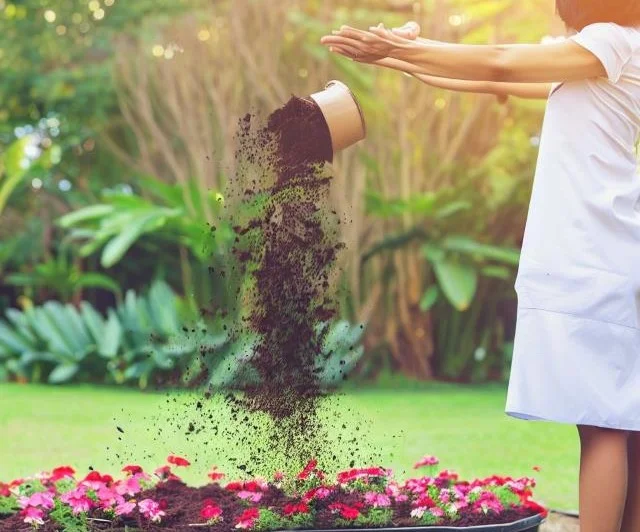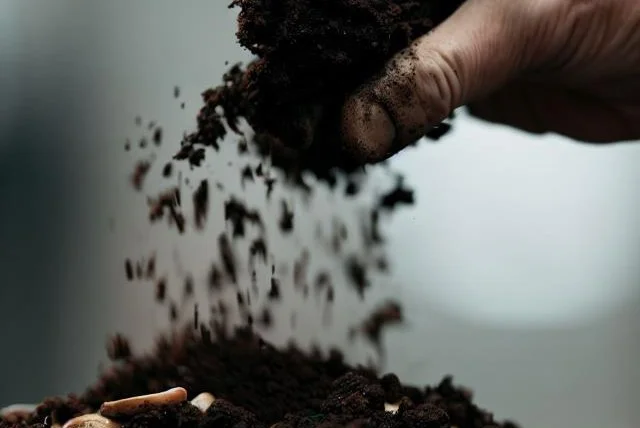How to Compost Coffee Grounds the Right Way
Coffee is one of the most widely consumed beverages worldwide, with over 500 billion cups drank per year. That massive amount of coffee produces tons of used coffee grounds, which often end up overflowing landfills. Composting coffee grounds is an easy, environmentally-friendly way to reduce waste while also creating free, nutritious fertilizer for garden plants. This comprehensive guide provides everything you need to know about how to compost coffee grounds successfully.
Key Takeaways
- Nutrient-Rich Compost: Composting coffee grounds enriches garden soil with essential nutrients, boosting plant growth and reducing landfill waste.
- Compostable Coffee Types: Both caffeinated and flavored coffee grounds can be composted, along with tea bags (without staples), but avoid plastic coffee pods.
- Composting Tips: Balance coffee grounds with carbon-rich materials, aerate regularly, and maintain proper moisture levels for successful composting.
- Garden Use: Apply mature composted coffee grounds to garden beds, container plants, and rows of vegetables for improved soil and plant health, especially for acid-loving plants.

Why Compost Coffee Grounds?
Composting coffee grounds benefits your garden soil and the environment in multiple ways:
Improves Soil Nutrients
Coffee grounds contain a range of macro and micronutrients that plants need for optimal growth:
- Nitrogen: Critical for healthy leaves and vegetation. Coffee grounds are rich in nitrogen.
- Phosphorus: Important for root system development and flowering.
- Potassium: Boosts overall hardiness, disease resistance, and drought tolerance.
- Calcium and magnesium: Aids in fruit development.
- Copper and zinc: Helps plants build proteins and growth compounds.
As the grounds break down slowly in compost, these nutrients are gradually released into the soil. This provides nourishment for plants and enriches the soil ecosystem.
Reduces Landfill Waste
Coffee grounds take up a large volume in landfills because of the spacious shape of the grounds after brewing. Their bulkiness causes them to quickly fill landfill space.
Composting coffee grounds means this waste does not end up in crowded landfills. Even small-scale composting can divert significant waste since millions of people drink coffee daily. Composting is a simple way to make a positive environmental impact.

Provides Free Fertilizer
The end result of composting coffee grounds is a free, organic fertilizing material teeming with essential nutrients plants need. By composting your own coffee grounds, you get this rich fertilizer at no cost.
High-quality compost improves soil structure and nutrient content. It releases nutrients gradually as plants need them. You can use composted coffee grounds as an alternative to chemical fertilizers.
Which Coffee Grounds Can Be Composted?
The good news is that nearly all types of used coffee grounds can be added to compost piles or directly layered around garden plants. Here are the main things to know:
- Caffeinated vs. decaf – Both caffeinated and decaffeinated coffee grounds work great. The tiny amount of residual caffeine will not harm soil or plant growth.
- Flavored coffee grounds – The grounds from flavored coffees like vanilla, hazelnut, etc. are perfectly fine to compost. Any flavors tend to dissipate and break down during the composting process.
- Tea bags – Empty tea bags can also be composted along with coffee grounds. Make sure any staples are removed first.
- Avoid coffee pods – The disposable plastic cups and pods from single-serve Keurig-style coffeemakers cannot be broken down and should go in your regular trash. Only use grounds from reusable coffee pods.
With the exception of non-compostable pods, feel free to add all the used coffee grounds from brewing your daily cup of coffee. The variety of coffee makes no difference when composting.

Composting Coffee Grounds Effectively
Proper composting techniques will integrate coffee grounds successfully into the decomposition process. Follow these tips for indoor and outdoor compost methods:
Outdoor Compost Piles
Outdoor compost bins or freestanding piles work well for larger volumes of coffee grounds. Here are some best practices:
- Mix grounds throughout – Spread and mix the grounds throughout the compost pile rather than concentrating them in one area. This prevents dense clumps of just grounds.
- Add carbon-rich browns – Balance out the high nitrogen coffee grounds by mixing in carbon-rich materials like dried leaves, straw, sawdust, or shredded newspaper. The ideal carbon to nitrogen ratio is around 25-30 parts carbon for every 1 part nitrogen.
- Turn and aerate regularly – Turning the compost pile weekly provides vital aeration to the decomposition process. It prevents dense, soggy spots and allows heat to disperse. Proper aeration encourages aerobic microbes.
- Monitor moisture – Coffee grounds can sometimes dry out an outdoor compost pile. Check the moisture level, and water occasionally if needed to maintain the ideal 40-60% moisture content.
Indoor Composting
For smaller household food waste including coffee grounds, indoor compost bins are very convenient. Here are some indoor composting tips:
- Balance with browns – Counteract the nitrogen in coffee grounds by mixing in shredded newspaper, dry leaves, sawdust or cardboard. Browns provide carbon and also improve aeration.
- Empty regularly – Indoor compost bins fill up quickly. Every 2 weeks, empty the finished compost into an outdoor bin or directly into garden beds.
- Control odors – Keep the bin clean and allow air circulation through the layers. Add more browns if it becomes too wet and odorous.
This handy table summarizes the ideal mix ratios and conditions:
| Method | Mix Ratio | Aeration | Moisture |
| Outdoor Pile | 1 part grounds : 25-30 parts browns | Turn weekly | 40-60% moisture |
| Indoor Bin | 1 part grounds : 2 parts browns | Empty regularly | Add browns if wet |
Follow these guidelines tailored to your composting setup for successful results composting coffee grounds!
Using Composted Coffee Grounds in Your Garden
Once coffee grounds have finished decomposing into dark, crumbly, earthy-smelling compost, it’s time to put them to work enriching your garden soil:

Determine When Compost Is Ready
It’s important to wait until compost is fully mature before using it in your garden. Here’s how to tell when coffee-based compost is ready:
- Texture – Finished compost will have a loose, crumbly texture similar to garden soil, with no clumps.
- Color – The compost will be very dark brown or almost black when ready.
- Smell – Mature compost has an earthy, soil-like aroma.
- Contents – No recognizable food scraps or coffee grounds should be visible.
Coffee grounds composted alone with just water takes 2-3 months to fully break down. Larger diverse piles maintained properly can finish in 6-12 months.
Application Guidelines
Here are some tips for putting finished composted coffee grounds to work:
- Till 1-2 inches of compost into the top 6 inches of garden beds before planting each season.
- For existing plants, rake back the mulch, sprinkle a thin layer of compost around the base of plants, and mix gently into soil.
- Blend 20% compost with 80% potting soil when re-potting container plants. This provides slow-release nutrition.
- Make excellent fertilizer for acid-loving plants like azaleas, blueberries, and evergreens. The low pH of the grounds creates ideal growing conditions.
- Side dress rows of vegetables by sprinkling a line of compost along both sides of plants. Work it lightly into the soil.
Benefits for Plants
Applying mature composted coffee grounds provides many benefits for plants:
- Slow-release source of nitrogen, phosphorus, potassium and micronutrients
- Improves soil structure, nutrient content, and moisture retention
- Promotes healthy microbial soil activity
- Can help repel garden pests like slugs and ants
- Enriches soil over the long term with organic matter
Go lightly when first using compost on young vegetable and flower seedlings, as the nitrogen content may burn tender roots if overapplied. But it’s an excellent fertilizer for most established plants. Take advantage of this free soil booster from your morning coffee routine!
Conclusion
Composting coffee grounds is incredibly simple, environmentally-friendly, and creates a valuable soil amendment for your garden. Follow the guidance in this article for successful coffee ground composting. Soon you’ll have thriving plants fertilized with the help of your daily cup (or cups!) of java








